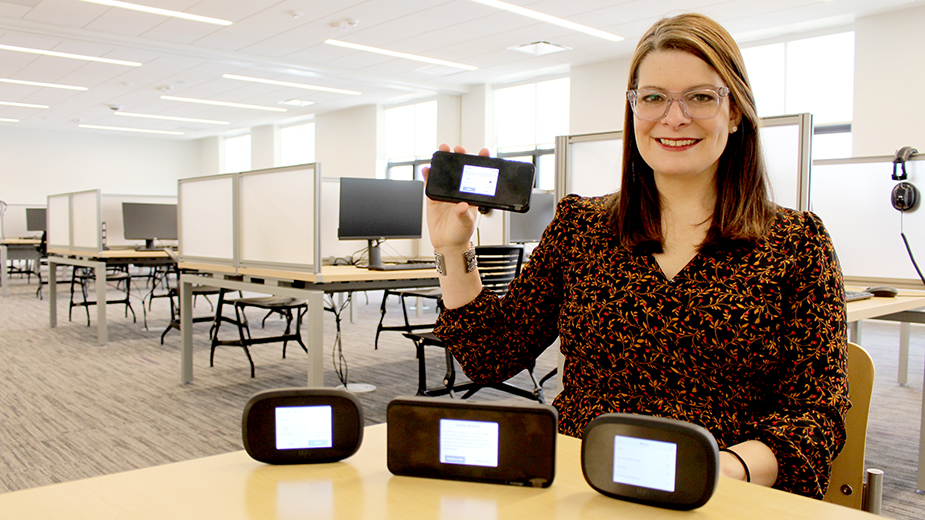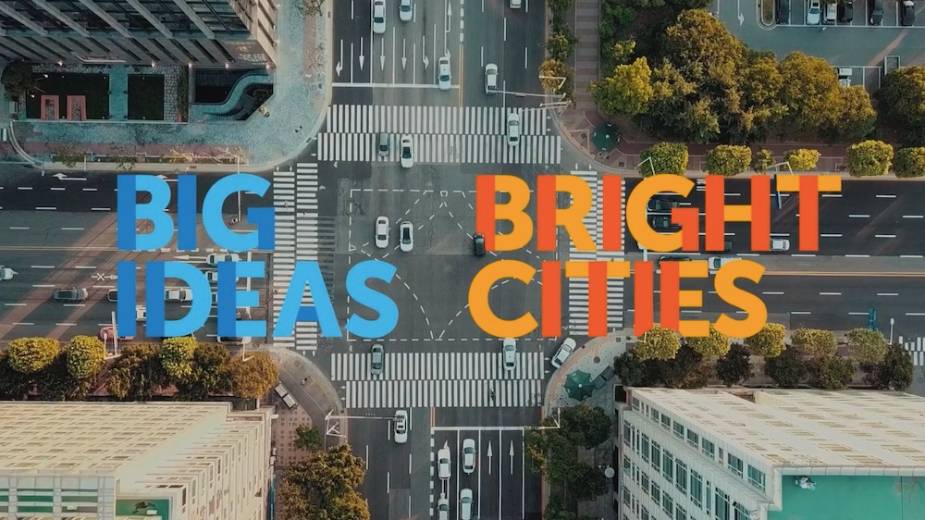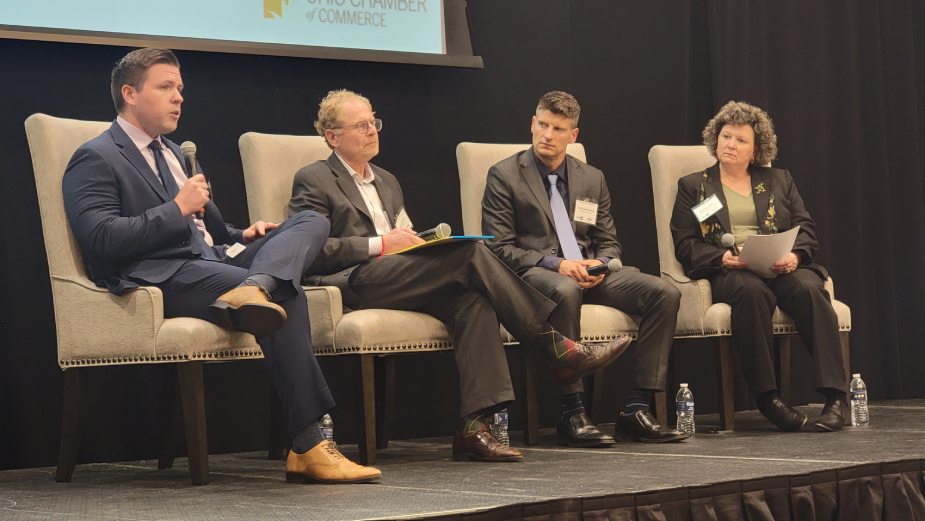Pace of Digitalization Leaves Many Behind
YOUNGSTOWN, Ohio – Referring to the internet as a utility, like water or electricity, makes Steve Kristan wince.
“It’s much more than a utility,” Kristan says. “It’s required from that sense. But it’s more powerful.”
The broadband coordinator for the Eastgate Regional Council of Governments likens the “information superhighway” to the waterways and interstate highways that allowed commerce to thrive in years past. From applying for jobs to paying bills or accessing assistance programs, access to the internet has become a necessity of daily life.
“I can’t think of any way that you can get a job now without going online,” Kristan says. “If you’re in your 20s or 30s, or even 40s and you’re looking to make a career change, you need to be online.”
Broadband, however, is anything but a level playing field. And those who aren’t connected are being left behind.
According to a broadband feasibility study published by Eastgate in June 2021, individuals who can’t afford proper internet service use free extended Wi-Fi outside public libraries, fast food restaurants or major retailers so students can finish homework or adults can apply for jobs. As the pandemic forced those establishments to temporarily close, that eliminated a source of Wi-Fi for those individuals.
The study found areas with lower population density experience less broadband availability, impacted further by a lack of choice or competition among providers.
Mahoning Valley organizations have made strides in recent years in connecting residents to affordable internet and hardware. But bridging the digital divide locally goes deeper than connectivity, hardware and even digital literacy – although those issues remain.
“On one hand, we’ve made some good progress in getting more and more people connected at a cheaper rate,” says Patrick Kerrigan, director of the Oak Hill Collaborative. “But I also think the problem is the pace of digitalization is just increasing phenomenally.”
Youngstown is the second-worst connected city in the state and 44th worst in the country, according to Kerrigan. Obstacles include a lack of internet connection or a connection that’s too weak to use, as well as a lack of hardware – or not enough familiarity with the hardware and software to make any use out of it.
These obstacles are compared to a three-legged stool: broadband availability, affordability and digital literacy. During the pandemic, organizations rolled out several programs to address these needs.
Getting Residents Connected
Last year, the Federal Communications Commission launched the Emergency Broadband Benefit, which provided qualified individuals as much as $50 off their monthly internet bills.
In January, the EBB was replaced by the $14.2 billion Affordable Connectivity Program. Qualified applicants who are 200% or more below the federal poverty guideline and participate in a low-income program are eligible for up to $30 off their monthly internet bills.
Oak Hill aided residents in applying for both programs, although Kerrigan hasn’t seen many people sign up. “I’m wishing it was a line out the door,” he says.
Kerrigan hopes greater promotion of ACP will drive more applicants.
To ensure residents have reliable hardware, Oak Hill works with refurbishers to prepare donated laptops, notebooks and desktops for sale. It recently refurbished 20 notebooks with Windows 10 and sold them for $99 each.
The Public Library of Youngstown and Mahoning County lends Wi-Fi hotspots and iPads to patrons with a library card, says Maggie Henderson, strategic communications officer. There has been a consistent two- to three-week waiting list for hotspots since 2016.
“A majority of people go right back on the waitlist after they return them,” Henderson says.
With 1,615 rentals last year, up 13.4% year-over-year, hotspots were the most popular item circulated in 2021, even over books, she says. At the height of the pandemic, when the library was forced to close its buildings, Wi-Fi accessibility was extended to the parking lot.
In October 2021, the library received $171,122 from the Electronic Connectivity Fund to buy new mobile Wi-Fi hotspots, iPads and the necessary data plans. The library currently has about 190 4G or 5G hotspots and 150 iPads.
To maintain privacy, patron use isn’t tracked. Anecdotally, librarians indicate patrons use on-site computers to access government services, health information, enroll in distance-learning classes or to start small businesses, according to Henderson.
Improving Digital Literacy
While the pandemic highlighted digital divide issues, it also hindered progress in some regard, Kerrigan says. Oak Hill offers computer literacy courses in English and Spanish for residents, but couldn’t hold in-person classes because of social distancing restrictions.
Even as restrictions are lifted and classes scheduled, some individuals remain hesitant, he says. That presents a catch-22. To reach more people for training, organizations had to get them online. But some of Oak Hill’s constituents aren’t online or can’t do it very well, he says.
At the public library, in-person training programs resumed Feb. 14 after they were paused in January, Henderson says. Programs range from how to use Microsoft Office to one-on-one tutorials for devices.
“They might have difficulty with email, or online applications for jobs, filing for unemployment, filing for health insurance, filing for Medicaid or Medicare,” she says. “They aren’t familiar with how to upload or attach documents to emails or websites.”
The library’s new Northstar Digital Learning program teaches those fundamental tasks, she says. And digital resources specialists at the library are exploring additional training opportunities.
“This remote learning, remote work – it’s not going away,” Henderson says. “So the more that we can help folks find opportunities to learn new skills and grow those skills is a good thing.”
Value: The Fourth Leg of the Stool
Seeing value in the internet is a fourth leg of the stool that experts say must be addressed.
“They may be able to afford it. They may be able to have it in their house,” Eastgate’s Kristan says. “But they just don’t see the value of it.”
To warm those individuals to tech, Oak Hill taught residents to use devices for things they enjoy, like downloading Bible mobile apps to their phones and computers, Kerrigan says. Classes extended to other applications such as Skype so residents could talk to their grandchildren during the pandemic.
For younger residents, Oak Hill introduced them to programming through video game development classes, getting them interested in computer science, he says. Kerrigan looks to hire a digital-education coordinator this year “so we can standardize and expand our program offerings,” he says.
One pressing issue is the rapid adoption of telehealth by health care providers. Last year, the Department of Health and Human Services reported the share of Medicare visits conducted through telehealth in 2020 increased to 52.7 million, up from about 840,000 in 2019, particularly in behavioral health care.
In an op-ed “Can We Better Define What We Mean by Closing the Digital Divide?” published in December by The Hill, Nicol Turner Lee writes individuals who aren’t online face systemic societal inequalities with trends like telehealth, online vaccination scheduling and online job applications. She contends policymakers need to consider poverty, geographic and social isolation as well when working to bridge the digital divide.
This can apply to urban and rural residents, as well as to seniors, who are particularly vulnerable to increased reliance on telehealth, Kristan says. With older individuals in need of medical care more than younger people, getting them trained with telehealth is an even greater prerogative.
While Eastgate and Oak Hill are working to raise awareness about telehealth, the problem is it requires fast internet speeds, Kristan says. For residents with slower speeds, or who lack internet, telehealth leaves them behind.
In its broadband feasibility study, Eastgate offered 10 recommendations, including short- and long-term goals, to improve access to high-speed internet and drive conversations at the community level about broadband connectivity.
One recommendation is to enact public policies to encourage broadband deployment, Kristan says, such as a “dig once” policy. “If the city or county is renovating a road or excavating a road, let’s consider putting in conduit” and make it available to new providers, he says. Getting more providers into a market can drive prices down while improving services and reliability, he says.
Kristan would also like to see a local innovation district, similar to what’s been done in Cleveland, Columbus and Canton, he says. Cities with historic buildings can designate innovation districts to take advantage of “special tax manipulations,” which can be reinvested.
“It’s a great way to maybe build an incubator accelerator,” Kristan says. Eastgate is having talks with Youngstown for such a project.
Closing the digital divide and enhancing broadband will allow local workers to compete nationally for remote work, Kristan says. Similarly, it will widen the applicant pool for Mahoning Valley businesses.
“The majority of internet traffic that goes from New York to Chicago or New York to LA flows through Northeast Ohio,” he says. “We can learn to leverage that more so we can have the access to the internet and people here can work anywhere.”
For any of these suggestions to work, state and federal governments realize they need to support the providers so they invest in building that infrastructure, he says.
There “a lot of funding coming available for internet accessibility,” Kristan says. Eastgate has worked to help local governments apply for those funds.
Programs like BroadbandOhio help to offset the cost to providers of installing fiber in areas that aren’t as densely populated, which would typically make it difficult for the provider to justify the expense, Kristan says.
As the infrastructure is built and government entities roll out programs to get people connected, organizations like Eastgate and Oak Hill must promote adoption and training.
“There’s still a divide. There’s still a gap,” Kristan says. “We’re not going to close that gap in six months or a year. But we are making progress.”
Pictured: Maggie Henderson shows the digital devices the Public Library of Youngstown and Mahoning County loans to patrons.
Copyright 2024 The Business Journal, Youngstown, Ohio.



